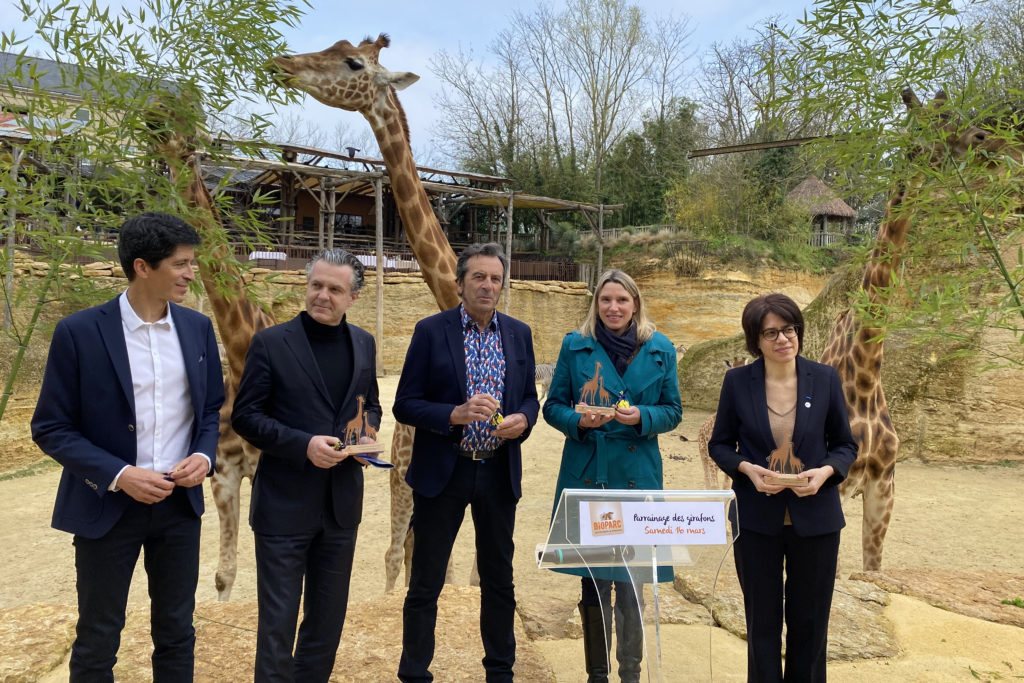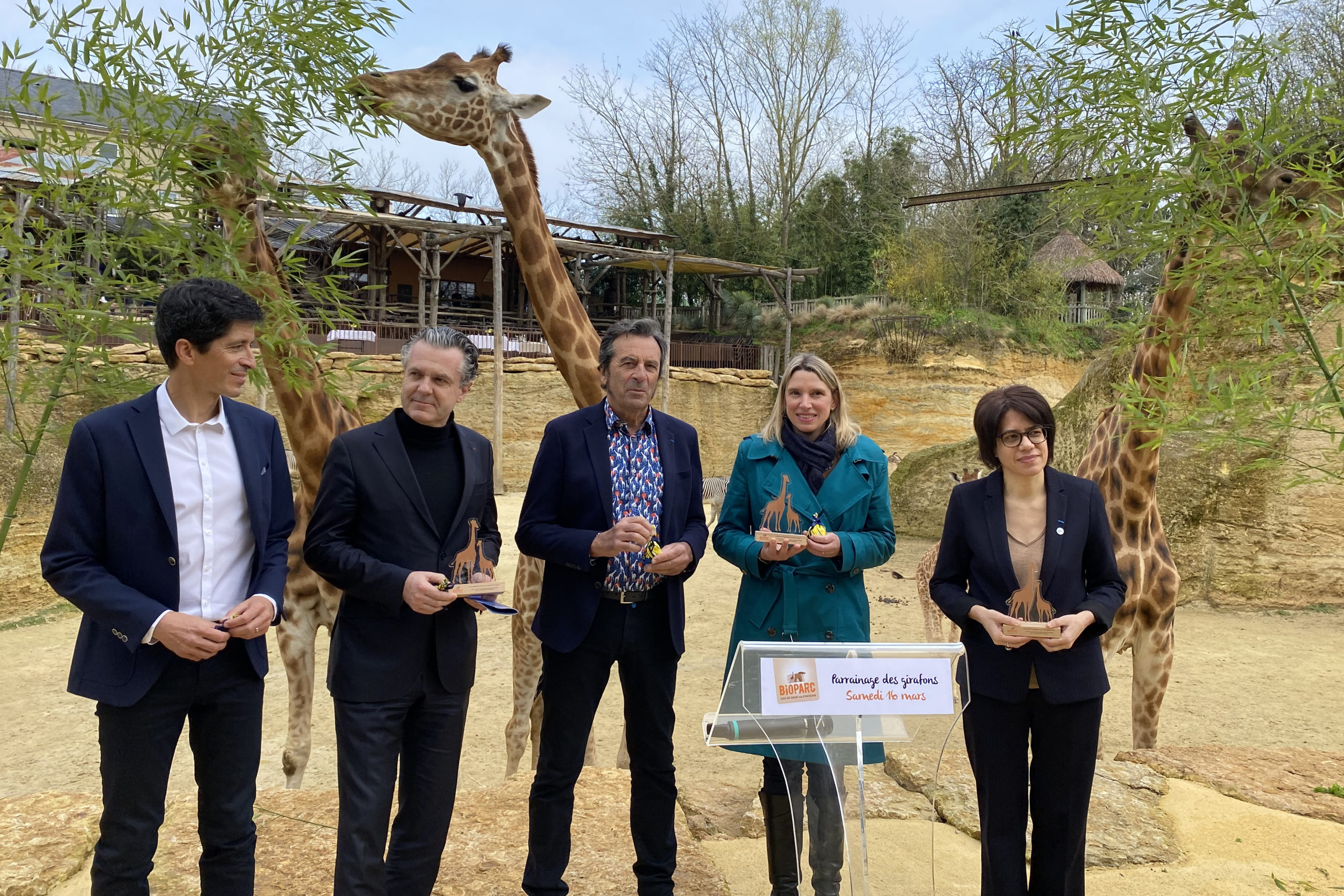
At the heart of conservation challenges, a promising initiative is emerging, and I have the privilege of being part of it. At the Bioparc, alongside Minister Christophe Béchu and Deputy Laetitia Saint Paul, I have decided to commit to the preservation of one of the most majestic creatures on our planet: the giraffe.
Icons of the Bioparc, the giraffes share this beautiful space with Grévy’s zebras. The Bioparc actively supports the protection of the last giraffes in West Africa, found in Niger, in collaboration with the Association for the Conservation of Giraffes in Niger. This unique population of giraffes is the only one that has seen its numbers increase thanks to conservation efforts carried out on the ground in cooperation with local communities.
A poignant example of this success is the birth of a new baby giraffe. This young male, named Kirsi, short for Kirsimeti, which means Christmas in Hausa, is the fifth baby giraffe born this year at the park, setting a record in France and at the zoo! With a group of 11 individuals, the park now hosts the largest group of Central African giraffes (Giraffa camelopardalis antiquorum) in the world. This critically endangered subspecies has only 1,400 individuals left in the wild and less than a hundred in zoos worldwide.
In their natural habitat, the numbers are alarming – scientists from the IUCN classify giraffes as “vulnerable,” with different statuses for the eight subspecies. The Kordofan giraffe and the Nubian giraffe are “critically endangered,” with 1,400 and 450 individuals respectively. The reticulated giraffe and the Masai giraffe are classified as “endangered.” The population of the latter has dropped by 88% in some counties in Kenya, such as Narok and Kitui.
In 2016, when the IUCN decided to list giraffes as vulnerable on its red list, the news was met with relative surprise. The previous assessment in 2010 still considered them to be of “least concern.” The gigantic animal remains fairly common in parks and reserves, giving the impression of an abundant species. However, their numbers have decreased by 40% between 1985 and 2015. Scientists often talk about a “silent extinction” because the decline has been very slow but significant.
In its latest assessment, published during COP28 in December 2023, the IUCN highlighted the impact of climate change on biodiversity. Under the pressure of population growth, their habitat continues to fragment. Giraffes are also hunted for their bones, brains, or tails, which are believed to have therapeutic properties against AIDS. Their tails are also used as good luck charms. In the Democratic Republic of Congo (DRC) and other countries in their range, armed conflicts encourage poaching and seriously undermine conservation efforts.
The Bioparc, in partnership with conservation organizations and government institutions, plays a crucial role in the preservation of giraffes. By providing a safe and suitable environment, the Bioparc contributes to the reproduction and genetic preservation of these fascinating animals. Every giraffe born here is a hope for the future of its species.

Comments are closed